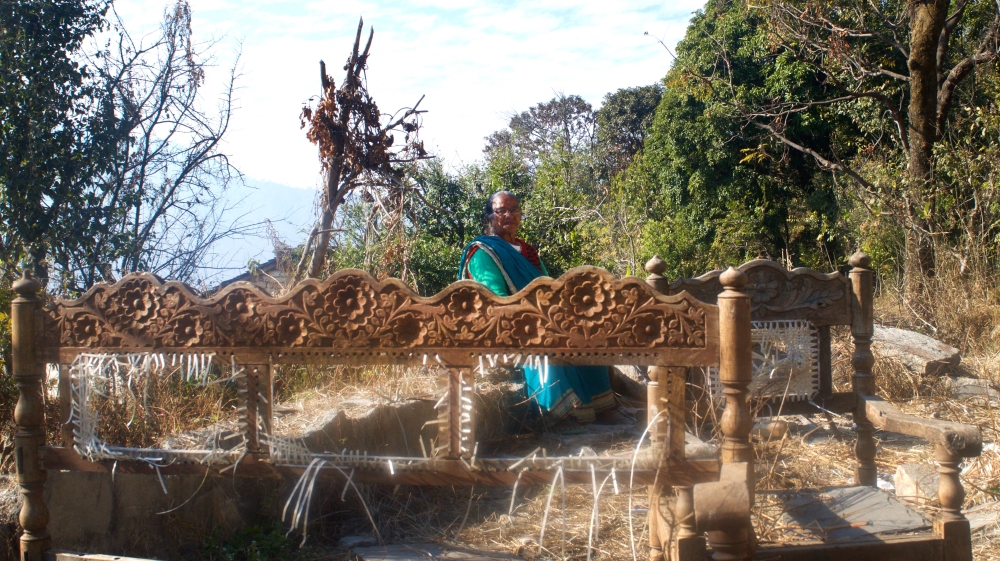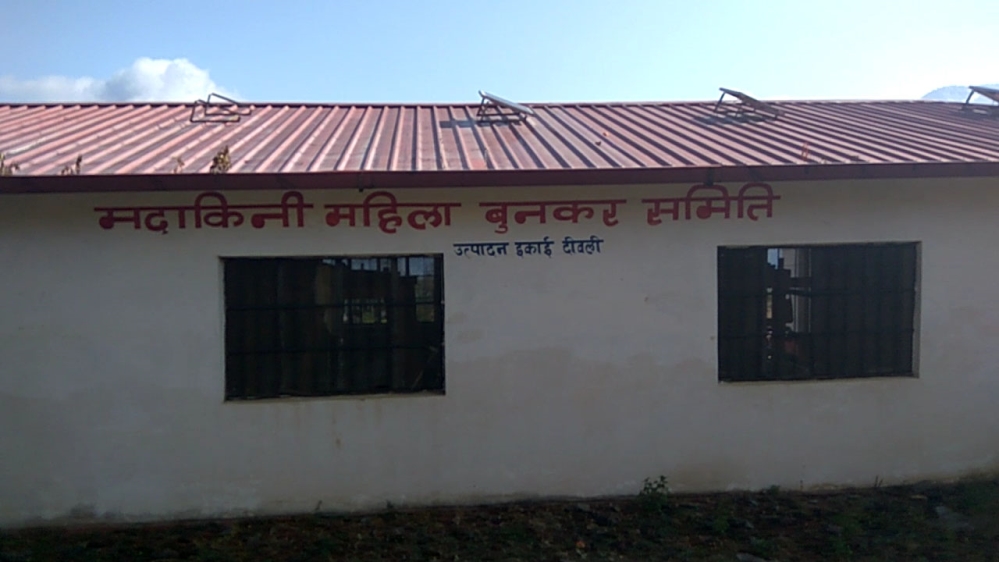
Uttarakhand, India – Haruli Devi sat on the ground in front of her new two-room house in Singhali village in the hilly northern state of Uttarakhand.
For early winter, the afternoon sun was unusually strong as the 65-year-old removed her sweater and wiped her eyes.
“My husband was killed in the landslide,” she said, remembering the day she became a widow in July two years ago. Her 72-year-old spouse died in a cloudburst in the nearby village of Bastari.
She now lives alone, while her two sons work in New Delhi.
“The rain didn’t stop, even for a minute. Thunderous lightening made us deaf all through the night,” she said.
The following day at about four in the morning, a neighbour woke the villagers, calling them to help save a family from the deluge.
As everyone gathered, there was a huge explosion. Dust and debris flew in the air. The rain continued unabated.
“It was as if a bomb went off,” said Haruli Devi, wiping her tears with an end of her sari. “Pillars came out from houses. A huge surge of water came down from above, carrying boulders, engulfing trees, houses and people.”
‘Nonexistence for society’
The state government announced that nine people had died, they had been submerged in the soil along with their houses. They were never found.
“The soil was like quicksand that sucked them along with it,” said Haruli Devi.
Since that day, Bastari has become known as a “ghost village”.
Disaster management officials declared the land uninhabitable and relocated 24 families to Singhali.
The government compensated Haruli Devi $6,200 for her husband’s death and gave her $4,700 to build a new house in Singhali.
But the cost of constructing the house was higher – $15,600 – a sum she arranged with the help of bank loans and money from relatives.
 |
| Haruli Devi says the widows have become as lifeless as the ruins of Bastari village [Arpita Chakrabarty/Al Jazeera] |
She now lives on a monthly widow’s pension of $15.
The land she owned in Bastari, on which she grew vegetables to feed the family, is now barren. She remembers a spring where enough water for everyone in the village could be drawn.
Now, in Singhali, she buys water from the government.
She is one of five Bastari women who lost their husbands in the landslide.
“We are now turned into a life of nonexistence for society,” said Haruli Devi.
A man who lost his entire family in the same disaster has now remarried, she said.
“Men are allowed to do everything. It’s easy for them.”
Dozens of natural disaster deaths a year
Two days before tragedy struck in Uttarakhand, the Meteorological Department had warned of heavy rainfall and flash floods.
The state recorded more than 100 mm of rainfall in just two hours on July 1, leaving 48 people dead in the districts of Pithoragarh and Chamoli.
Natural disasters in the state kill dozens every year.
Cloudbursts, landslides and floods are common, and large companies are often called in to manage evacuation and rescue efforts.
Extreme rainfall, geological scientists have warned, weakens the mountains.
Meanwhile, construction in the hills in the name of development has also increased the number of casualties and amount of damage.
 |
| Haruli Devi’s old house [Arpita Chakrabarty/Al Jazeera] |
According to disaster management officials, more than 800 people died in the state from 2010 to 2017 due to events triggered by heavy rainfall. Hundreds of people have been injured or gone missing.
But this death toll doesn’t include the flash floods of June 2013, which killed more than 5,700 people and wiped away entire villages.
Locals who survived the floods disputed the official number, saying more than 15,000 people died.
Piyoosh Rautela, who heads Uttarakhand’s disaster mitigation and management department, said the state is witnessing the fury of climate change.
“There will be phases of severe rainfall in years to come. We are aware of the vulnerable zones and, we know, sooner or later, landslides will strike at these places,” Rautela told Al Jazeera.
‘Village of widows’
Women suffer most in the aftermath of a disaster, and those from unprivileged castes face further exclusion with limited access to resources.
The 2013 catastrophe left hundreds of women alone, after their husbands and sons died.
The district of Rudraprayag alone has 296 widows. In some sections of Indian society, widows are discouraged from leaving their houses or meeting people.
Rita Devi – not her real name – is from the village of Deoli-Bhanigram, home to 32 widows. She was six months pregnant when her husband, a priest, died.
“Widows like us are cursed. We bring shame to the family,” she told Al Jazeera, explaining that she rarely gets a good night’s sleep on account of her anxiety about the future.
“Being a widow is difficult. Who will look after my son? I have no income. When I am alone, some men make dirty remarks at me,” she continued.
A recent graduate, she is now studying for a master’s degree. She wants a government job in the city, where she believes she won’t be labelled as cursed.
Sitting with her mother-in-law, she said: “Remarrying is a taboo in the community of upper-castes. If I get a job, I can spend the life with my son. At least I wouldn’t be a burden to this family.”
Most of the compensation she received after the disaster has dried up.
Deoli-Bhanigram is known as Uttarakhand’s “village of widows”.
Opportunities amid the wreckage
Several non-profit organisations attempted to support the women of Deoli-Bhanigram after the June 2013 floods, providing them with work to become self-sufficient.
Ranjana Devi, another widow, is among those who received help. She now works at Mandakini Women Weavers in Deoli-Bhanigram as a handloom weaver, earning a monthly salary of $28.
She used the compensation money for her daughter’s marriage and looks after her two sons, one of whom is physically disabled.
“God willing, my sons and I will survive,” she said.
Another NGO, Sulabh International Social Service Organisation, paid $31 a month to disaster-affected families for three years.
Sewing machines and flour mills were also distributed to some women.
However, NGOs and the government offered little assistance to women outside Deoli-Bhanigram.
Rautela argued that the state government’s budget was limited.
“We don’t have enough funds for counselling and rehabilitation efforts of disaster-impacted people, especially women. Our work ends when the disaster ends,” he said.
The struggling women, who say the state government had promised them jobs, are left to deal with the prospect of more unpredictable weather and an uncertain future.
“We aren’t their vote banks,” said Rita Devi, commenting on the lack of support from the state government. “We don’t feature in their policies.”
 |
| The cooperative of Mandakini Women Weavers in Deoli-Bhanigram employs 33 village women [Arpita Chakrabarty/Al Jazeera] |












